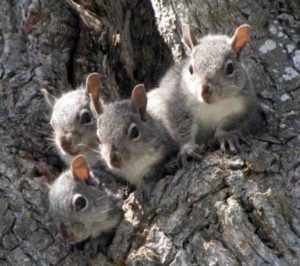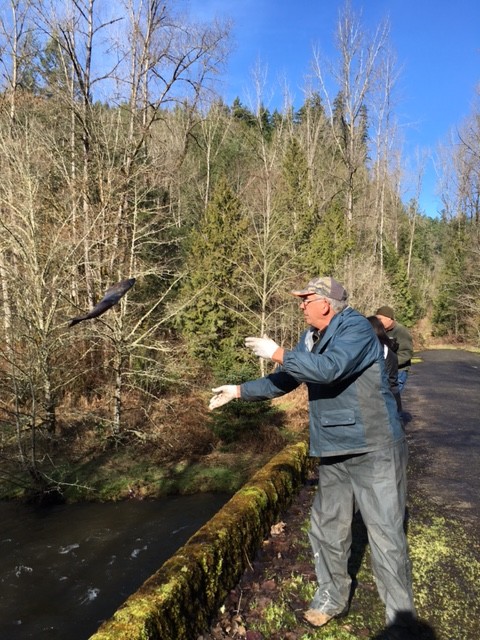Spying on Squirrels!
Have you seen a squirrel yet today? Chances are, if you’re in the South Puget Sound region, you have! If you haven’t, it may just take a couple of minutes looking out your closest window. They’re everywhere! And they are incredibly fun and entertaining, as you can see from videos like this one! That’s why we are recommending this activity below for you this week, Spying on Squirrels. They are common and fun to watch.
Trying to tell Eastern vs Western Gray squirrels – it’s a real gray area! (ba-dum-tsss!!)
There are four native squirrel species in Washington state: the Western Gray, Douglas’, Red and Flying squirrels. All of our native squirrels in Washington are protected by law and may not be hunted or trapped. You can learn a lot more about Washington’s squirrels from the Washington Department of Fish and Wildlife.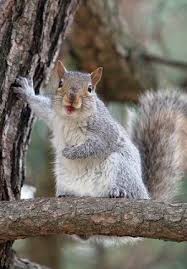
Now the most common squirrel around is not native, the Eastern Gray Squirrel. It’s almost impossible to tell apart from it’s Western cousin. The Eastern Gray has adapted so well to living in cities and towns, some people consider them a pest! Sadly, they have crowded out some of our native species. But remember, it’s not the squirrel’s fault it’s here. They’re just living their little squirrel lives!
No matter what type of squirrels you observe, they will make you laugh out loud and keep you busy. Check out the activity below from National Wildlife Federation’s Ranger Rick magazine by Kate Hoffman. We made a little data sheet you can print off, or you can make your own. Remember to use tally marks to track what you see. Have fun!

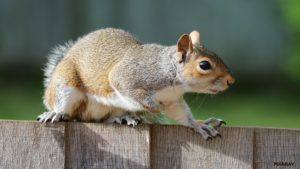
Spy on Squirrels
With their bushy tails, bright eyes, and busy-busy-busy ways, squirrels are easy to spot and fun to study.
Surely you’ve seen plenty of squirrels. They’re busy in front yards, backyards, schoolyards, and pretty much anywhere else you might go. Squirrels scamper and scurry, gather and bury, chase and chatter—all day long.
Are you feeling a little squirrelly? Grab a notebook and start a squirrel study. Head to a nearby window at home or stake out a spot in your yard. Pretty soon, you’ll be an expert squirrel-watcher.
Can you spot the following tree squirrel behaviors? Check off each one you see.
- Clever Climbing. Squirrels are treetop acrobats. With gripping feet and long tails for balance, they climb high and leap along from branch to branch.
- Chasing and Racing. In late winter, squirrels choose mates. Males chase females and try to chase away other males. Watch for them running and leaping at top speed.
- Busy Building. Squirrels make leafy nests in tree holes and on branches. If you spot what seems to be a messy pile of leaves up in a tree, it’s likely a squirrel nest, called a drey (DRAY ).
- Zigging and Zagging. Have you seen a squirrel run out into the road in front of a car, stop, run back, run forward again, and barely escape? This routine seems foolish, but it’s a trick that works well when an animal is chasing the squirrel—just not so well when the “predator” is a car.
- Treasure-Seeking. Acorns and other nuts are favorite foods for squirrels. They stash nuts in trees and bury them in the ground. Then, in winter when food is scarce, they use their sharp noses to sniff out the hidden snacks.
- Daring Dining. You may have seen squirrels trying all kinds of tricks to get to a bird feeder or other yummy food. They don’t give up easily, do they?
- Chatterboxing. Squirrels chatter, click, and squeak to talk to each other. They also may flick their tails. What they’re usually saying is, “Stay away. This food is mine.”
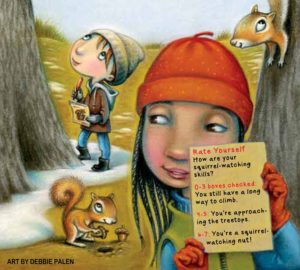
Squirrel antics will make you smile. Scamper outside and see what those busy bushy-tails are up to!

